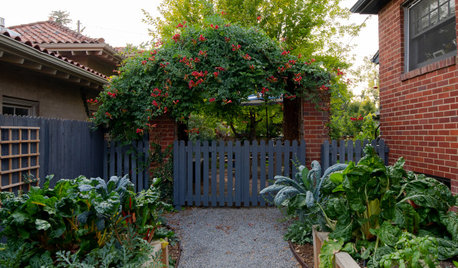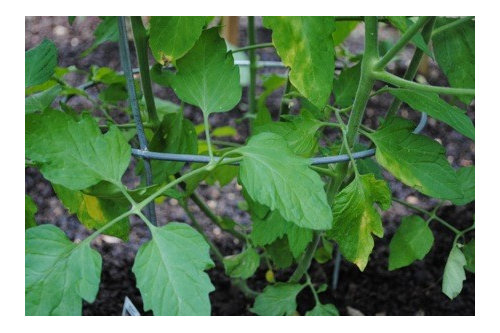Tomato disease? Lancaster PA
alastairblake
13 years ago
Related Stories

EDIBLE GARDENSA Formerly Weedy Lot Now Brims With Edibles and Honeybees
Photographers transform their barren backyard into an oasis filled with fruit, vegetables, honey, eggs and more
Full Story
GARDENING GUIDES12 Edibles Perfect to Plant in Late Summer
Keep those homegrown vegetables and greens coming well into fall
Full Story
GARDENING GUIDES10 Easy Edibles for First-Time Gardeners
Focus on these beginner-friendly vegetables, herbs, beans and salad greens to start a home farm with little fuss
Full Story
ARCHITECTURETell a Story With Design for a More Meaningful Home
Go beyond a home's bones to find the narrative at its heart, for a more rewarding experience
Full Story
EDIBLE GARDENSHow to Add an Apple Tree to Your Edible Garden
Readily available, beautiful and fragrant, apple trees offer four-season interest along with crisp, juicy fruit
Full Story
GARDENING FOR BUTTERFLIESBring on the Birds: Natural Habitat Ideas for Gardens of All Sizes
Provide nesting, watering and perching spots inspired by the Costa Rican jungle and watch the birds flock on over
Full Story
HOUZZ CALLShow Us the Best Kitchen in the Land
The Hardworking Home: We want to see why the kitchen is the heart of the home
Full Story
SUMMER FRUITS AND VEGETABLESSummer Crops: How to Grow Beans
Grow your own beans for amazing variety and healthy, convenient produce all summer
Full Story
HOUSEPLANTS8 Essentials for Healthy Indoor Plants
Houseplants add so much to our homes — and can thrive when grown in the right conditions. Keep these tips in mind
Full Story
GARDENING GUIDESAttract Hummingbirds and Bees With These Beautiful Summer Flowers
Roll out a welcome mat for pollinators to keep your landscape in balance and thriving
Full Story






alastairblakeOriginal Author
lionheart_gw (USDA Zone 5A, Eastern NY)
Related Professionals
70037 Landscape Architects & Landscape Designers · River Forest Landscape Architects & Landscape Designers · Mount Wilson Landscape Architects & Landscape Designers · Aberdeen Landscape Contractors · Galt Landscape Contractors · Mastic Beach Landscape Contractors · Munster Landscape Contractors · Rancho Santa Margarita Landscape Contractors · Waipahu Landscape Contractors · Four Corners Landscape Contractors · Merrifield Landscape Contractors · Berkeley Siding & Exteriors · Germantown Siding & Exteriors · Kennewick Siding & Exteriors · Orland Park Siding & Exteriorstorquill
rosspa
lionheart_gw (USDA Zone 5A, Eastern NY)
torquill
lionheart_gw (USDA Zone 5A, Eastern NY)